
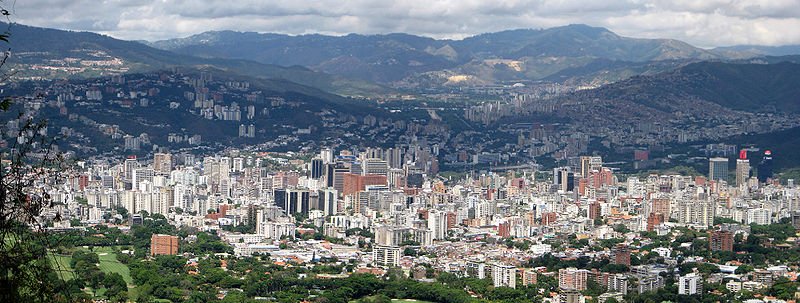 Caracas, viewed from Mount Avila
Caracas, viewed from Mount AvilaSource: https://commons.wikimedia.org/wiki/File:CaracasAvila.jpg
Author: SuperHercules

Caracas is the capital and biggest city in Venezuela. Its official name is Santiago de León de Caracas. The city is located on the northern coast of the country. It covers 1,930 sq km (745.2 sq mi) and has a population of 1.8 million people (2011 estimate), within a metropolitan area of 5.2 million people. Caracas observes the Venezuela Standard Time, which is hour and a half hours behind Coordinated Universal Time (UTC-4:30). The phone area code for Caracas is 212.
Caracas occupies a valley in the Venezuelan coastal mountain range. The city is on an elevation ranging from 760 m (2,493 ft) to 1,043 m (3,422 ft). The Old Town is at an elevation of 900 m (2,954 ft). Separating Caracas from the coast, about 15 km to the north, is El Ávila National Park.
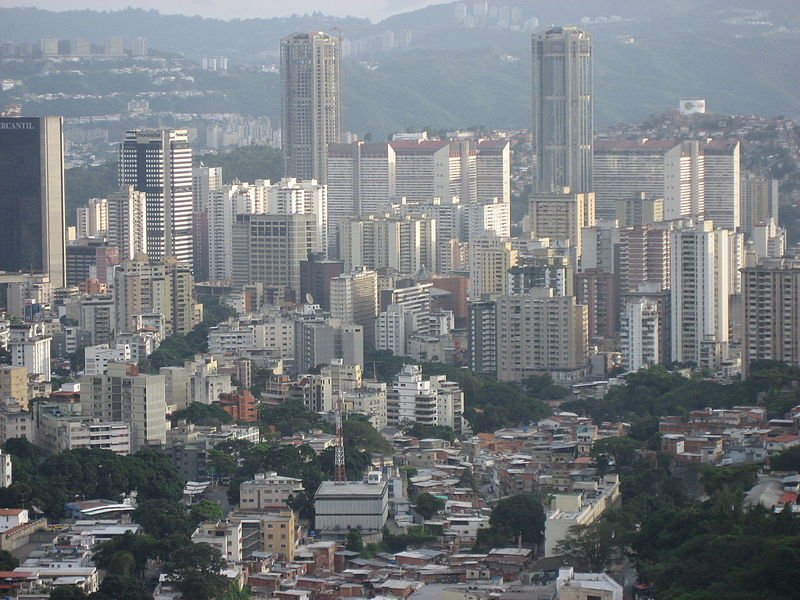 Caracas, Venezuela
Caracas, VenezuelaSource: https://commons.wikimedia.org/wiki/File:Caracas_dec.JPG
Author: Muka

The climate of Caracas is classified as tropical savanna. Temperature is fairly constant throughout the year, the average high is around 30.3°C (86.5°F) while the average low is around 16°C (60.8°F). Rain is heaviest in June, which receives 134 mm (5.28 in) of precipitation.
The Caracas area was inhabited by indigenous people when the Spanish arrived there over four hundred years ago. The city was founded on 25 July, 1567 by Captain Diego de Losada. The city was placed away from the coast which was then vulnerable to pirate raids. Nevertheless Caracas was attacked once, in the 1680's, when buccaneers penetrated the pass and enter the town, which they then ransacked and burned.
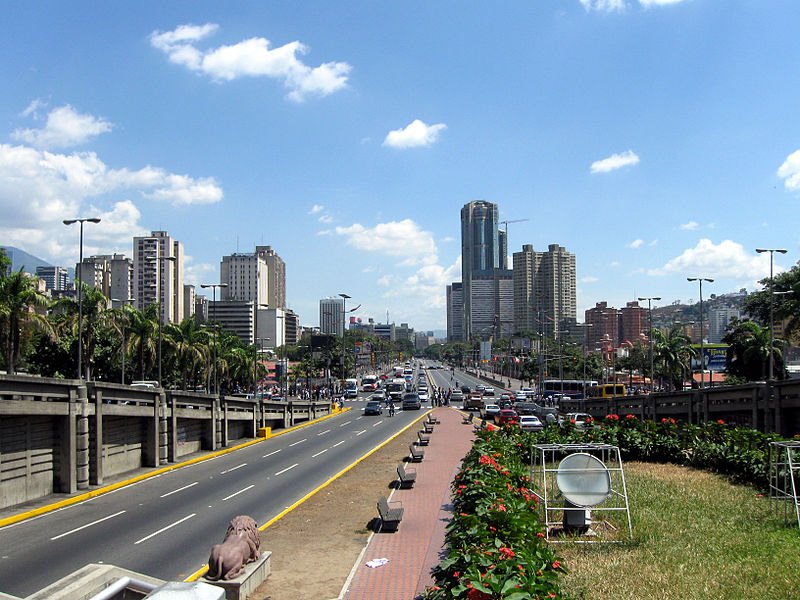 Avenida Bolívar, Caracas
Avenida Bolívar, CaracasSource: https://commons.wikimedia.org/wiki/File:Av_Bolivar_caracas2.jpg
Author: Erik Cleves Kristensen

Caracas was made the capital of the Captaincy General of Venezuela in 1777. Inspired by the French Revolution and the American Wars of Independence, the people of Venezuela declared their independence in Caracas on 5 July, 1811. However the Spanish crown did not accept the declaration, resulting in a war of independence which continued until 1821, when the independence fighters under Simón Bolívar won against the royalist.
Caracas modernized rapidly in the 20th century, its growth fueled by oil wealth. On the other hand, there is a gulf in income disparity between the middle3 class and the low-income working class, which creates a belt of slums, called rancho, in the city. These are populated by the rural poor who come to the city in search of better opportunities.
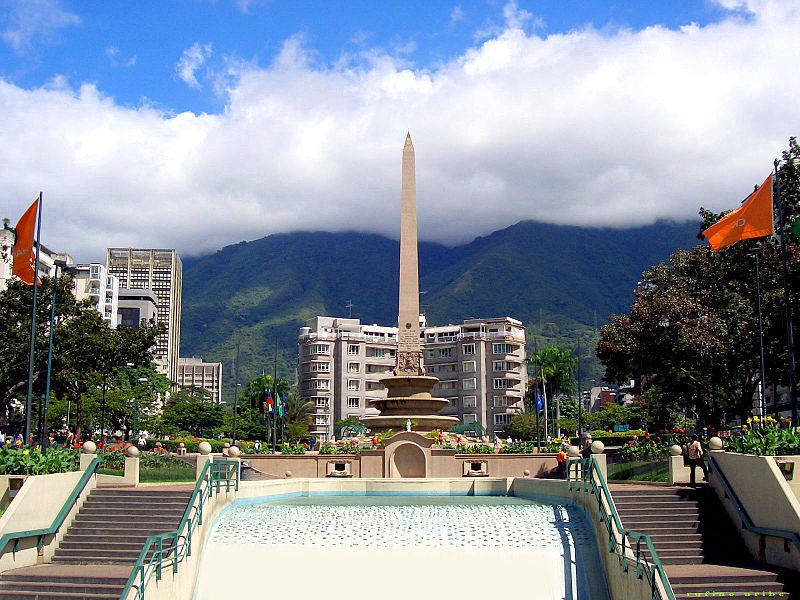 Plaza Francia, Caracas
Plaza Francia, CaracasSource: https://commons.wikimedia.org/wiki/File:Plaza_Francia.jpg
Author: Duncharris

Visiting Caracas, Venezuela
The main airport is the Simón Bolívar Airport, located in Maiquetía, 25 km from downtown Caracas. The taxi fare to Caracas is BcF 150 (which at the official - and inflated - exchange rate, comes to US$70).Exchanging money can be a big hassle in Venezuela due to exchange controls implemented by the government since 2003. Exchanges must be done at official exchange houses (called casa de cambio) or banks following a fixed official rate. It is not possible to exchange money at hotels.
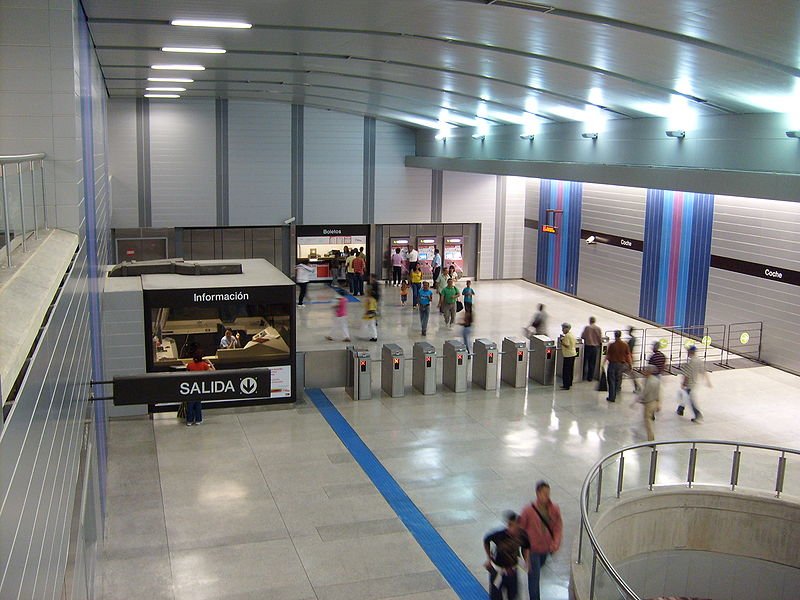 Estacion Coche, Caracas Metro
Estacion Coche, Caracas MetroSource: https://commons.wikimedia.org/wiki/File:Estacion_Coche_L3_METRO_DE_CARACAS.JPG
Author: HARIDAS MEDEROS OCANDO

Places of Interest in Caracas, Venezuela
- Caracas Cathedral
- Caracas East Park
- Federal Capitol of Venezuela
- National Pantheon of Venezuela
- Parque Central Complex
- Plaza Bolívar
- Plaza Caracas
- Plaza San Jacinto
- Plaza Venezuela
- Simón Bolívar birthplace
- Teresa Carreño Cultural Complex
 Latest updates on Penang Travel Tips
Latest updates on Penang Travel Tips
About this website

Dear visitor, thank you so much for reading this page. My name is Timothy Tye and my hobby is to find out about places, write about them and share the information with you on this website. I have been writing this site since 5 January 2003. Originally (from 2003 until 2009, the site was called AsiaExplorers. I changed the name to Penang Travel Tips in 2009, even though I describe more than just Penang but everywhere I go (I often need to tell people that "Penang Travel Tips" is not just information about Penang, but information written in Penang), especially places in Malaysia and Singapore, and in all the years since 2003, I have described over 20,000 places.
While I try my best to provide you information as accurate as I can get it to be, I do apologize for any errors and for outdated information which I am unaware. Nevertheless, I hope that what I have described here will be useful to you.
To get to know me better, do follow me on Facebook!
Copyright © 2003-2025 Timothy Tye. All Rights Reserved.

 Go Back
Go Back